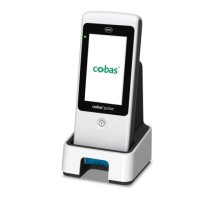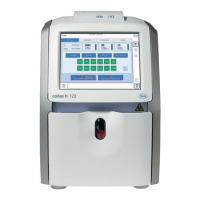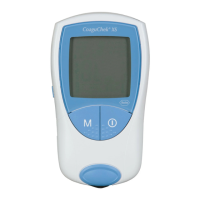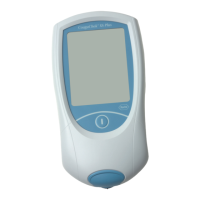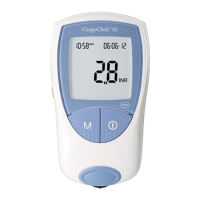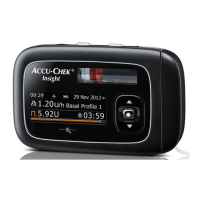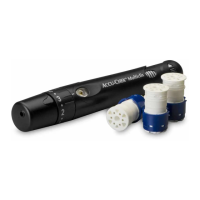cobas c 111 Installation Manual
04906900001
INSTALLATION-MANUAL cobas c 111
Version 3.0 Page 9 of 43
Electrical safety
Danger of electric shock if you touch any power supply parts.
Do not access any electrical parts while the analyzer is connected to the main power
supply.
Users may replace fuses if they follow the procedures described in this manual. Any
other electrical modification is not allowed and may render any warranties on the cobas
c 111 null and void.
Fire risk
Danger of explosion through sparks. Keep all potentially flammable or explosive mate-
rial (for example, anesthetic gas) away from the analyzer.
Spraying liquid on the power supply parts can cause a short circuit and result in a fire.
Keep the cover closed while the analyzer is connected to the main power supply and do
not use sprays in the vicinity of the cobas c 111.
During fire-fighting operations disconnect the cobas c 111 from the main power supply.
Analyzer in use
Danger of hands injury by moving parts. Keep all covers closed during initialization or
operation.
Samples
Danger from infectious sample material can cause severe illness. Avoid direct contact
with sample material. Clean contaminated surfaces immediately and dispose of waste
according to local regulations. Please refer to your local safety regulations regarding
handling sample material.
Waste
Danger from infectious waste material can cause severe illness. Avoid direct contact with
waste. Dispose of the waste according to local regulations.
Quality control
Danger of false results. Patients can be put at risk if false results lead to incorrect dia-
gnosis and therapy. Carry out quality controls according to the local regulations.
Correct use
Use the cobas c 111 only for measuring liquid sample material with the specified Roche
reagents. Sample material can be serum, plasma, urine.
User qualification
Danger from incorrect operation. The cobas c 111 should only be used by a qualified
operator experienced in the use of such equipment.
Environmental conditions
Incorrect location can cause incorrect results and damage to the equipment parts.
Follow the installation instructions carefully. Moving the cobas c 111 must be per-
formed only by qualified personnel.
Location
The cobas c 111 is designed for indoor use and the instrument must be located on a
stable and level surface that is not subject to vibration. The instrument should not be
placed in a position where strong or variable light conditions exist (e.g. direct sunlight).
Avoid locations where other equipment may create interference from high frequency or
high voltage electromagnetic fields.
Allow sufficient space around the instrument for convenient working.
